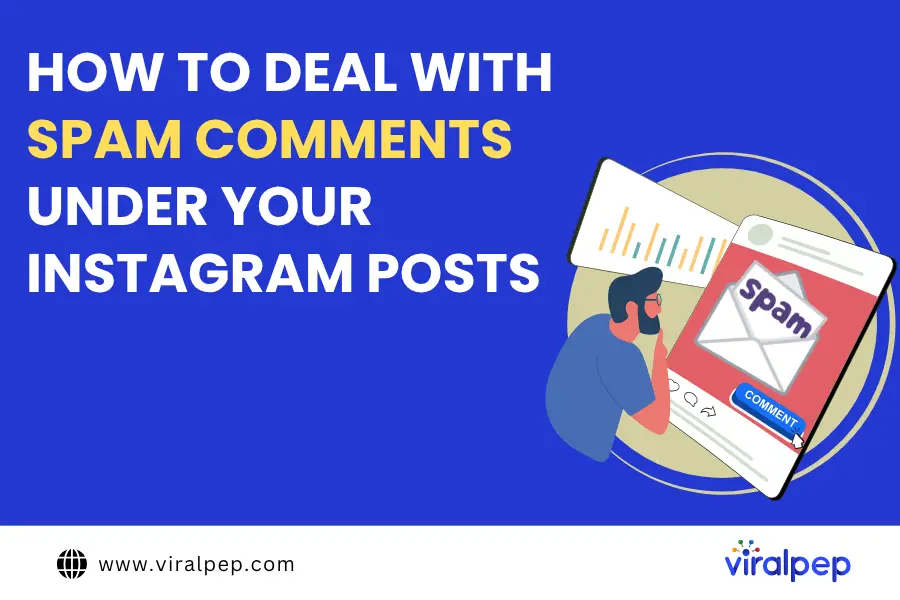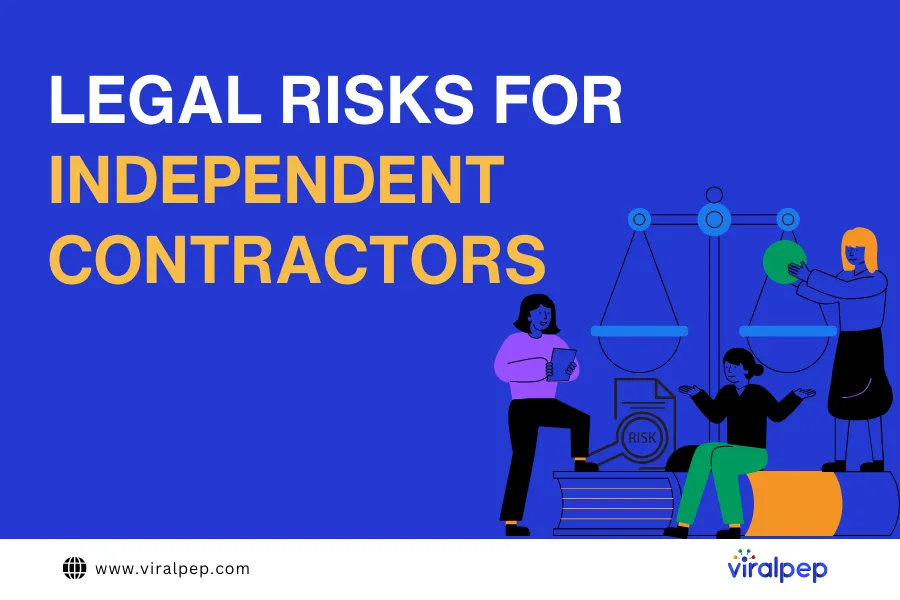You’ve just posted a great photo or reel on Instagram — maybe a vacation snap, a business update, or a meaningful quote — and within minutes, the comments start rolling in. But instead of genuine engagement, you’re met with “DM me for promo”, suspicious links, or awkwardly worded messages promising overnight fame. Sounds familiar?
Spam comments are a growing annoyance on Instagram, cluttering your posts, distracting your followers, and sometimes even damaging your credibility. But why do people (or bots) leave them in the first place? What’s in it for them, and what can you do to protect your account and maintain a clean, authentic online presence?
In this article, we’ll explore the motives behind Instagram spam comments, the types you’re most likely to encounter, and practical steps to prevent spam comments.
Understanding Spam Comments on Instagram
Spam comments on Instagram are automated messages generated by bots (or sometimes written by real people) that flood the comment section with irrelevant and often offensive content. These comments are typically uninvited and aim to promote something or annoy users. They can range from generic phrases like “Nice post!” to more malicious content containing suspicious links and excessive emojis. The sheer volume of these irrelevant comments can clutter your comment section, which makes it harder for genuine interactions to take place.
The impact of spam comments goes beyond mere annoyance. They can:
- Pose serious risks to user experience and personal information.
- Diminish brand reputation for businesses.
- Misrepresent the success of a post by artificially inflating engagement metrics.
Alarmingly, approximately 10% of Instagram’s user base consists of bots.
Common Types of Spam Comments
Spam comments on Instagram come in various forms, but they can be broadly categorized into three main types: generic comments, excessive emojis, and promotional messages. Understanding these types can help you identify and manage them more effectively.
Generic comments are often automated and include phrases like “Check out my page” or “Nice post”, which lack meaningful engagement. These comments are designed to appear friendly and engaging, but are typically posted by bots or spam accounts. Common phrases used by bots include generic compliments like “Good job” or “Awesome post”, which could apply to any image and do not add value to the conversation.
Another common type of spam comment involves the excessive use of emojis. These comments often contain an abundance of emojis that are unrelated to the post’s theme. While they may look engaging at first glance, they fail to provide any substantial or relevant information.
Lastly, promotional messages are spam comments that include irrelevant promotional content aimed at boosting engagement or directing users to external sites. These messages often clutter the comment section with unwanted advertisements and links.
Why Spammers Target Instagram Specifically
Here’s why Instagram is such a common target for spam:
1. High Engagement Rates
Instagram users tend to engage more with content (likes, comments, shares) than on many other platforms. Spammers exploit this by flooding popular posts with comments in hopes of visibility and clicks.
2. Massive Audience
With users from all age groups and demographics, Instagram provides a wide and diverse audience. Spammers try to cast a wide net, hoping someone will fall for their messages, whether it’s a fake giveaway, a shady link, or a suspicious promotion.
3. Hashtag Discovery
The use of hashtags makes it easy for spammers to find trending content. They often target posts under popular or frequently searched hashtags to gain more exposure.
4. Easy to Automate
Unlike platforms with tighter spam filters, Instagram’s comment sections are still relatively vulnerable to automation tools. Bots can be programmed to leave thousands of generic or promotional comments every day, often without detection, especially on public accounts.
5. Influencer & Brand Exposure
Spammers target influencers, businesses, and creators because their pages are more likely to attract real users. By piggybacking on popular posts, spammers try to redirect attention to their own accounts or scams.
6. Lack of Strict Barriers for New Accounts
Instagram makes it fairly easy to create a new account. When spam accounts are blocked or banned, it only takes a few minutes for spammers to set up a new one and continue their activity.
Who Is Behind These Spam Comments?
Not all spam comments are created by the same type of user. Some are the result of bots programmed by marketers trying to gain attention for low-quality services or products. Others stem from scam operations attempting to lure users into phishing websites or fake investment schemes.
In some cases, growth hackers and small influencers use spammy tactics to promote their profiles and boost visibility quickly, albeit unethically. There are also fake giveaway accounts and impersonators pretending to represent popular brands or celebrities.
Understanding who is behind these comments can help you spot the red flags and avoid falling for misleading or dangerous messages. Some spam comments may include suspicious links, fake promotions, or requests for your phone number. Engaging with these messages or sharing your contact info could lead to unwanted spam calls or phishing attempts. To stay safe, avoid spam calls by never clicking on unknown links and never providing your phone number to accounts you don’t trust.
How to Stop Spam Comments on Instagram
While you can’t prevent spam entirely, Instagram offers several built-in tools to help you reduce or block it. Here’s what you can do:
1. Use Instagram’s Hidden Words Feature
Instagram allows you to automatically hide comments that contain certain words, phrases, or emojis.
- Go to Settings > Privacy > Hidden Words
- Enable “Hide comments” and “Advanced comment filtering”
- Add keywords or emojis often used in spam
This filters out many common spam comments before they even appear.
2. Manually Block or Report Accounts
If certain accounts are repeatedly spamming you, block them or report them directly from the comment or their profile. This helps Instagram improve its spam detection.
- Tap the three dots next to the comment or profile
- Choose Block, Report, or Restrict
3. Limit Who Can Comment
You can restrict comments to people you follow or who follow you.
- Go to Settings > Privacy > Comments
- Under “Allow Comments From”, choose a more limited audience (e.g., “People You Follow”)
This reduces exposure to random spammers.
4. Turn Off Comments on Specific Posts
If you’re getting spam on certain types of content, consider turning off comments just for those posts.
- Tap the three dots on the post > Turn off commenting
Impact of Ignoring Spam Comments
Ignoring spam comments can have several negative consequences:
- The presence of spam comments can obscure genuine user interactions.
- Engagement metrics on Instagram can be artificially inflated using spam comments, which may lead to algorithmic penalties.
- Engagement with spam comments can lead to significant credibility loss for influencers and brands.
- Reduced engagement from real followers can significantly harm the overall reputation of an Instagram account.
Moreover, the use of spam bots on Instagram can risk account suspension, as the platform actively monitors for such activities. Addressing spam comments is crucial for maintaining engagement, credibility, and security on your Instagram account.
Keeping Your Instagram Profile Clean
Maintaining a clean comment section involves:
- Removing spam comments and managing comment quality.
- Eliminating spam tags and mentions to maintain a professional account.
- Reporting spam bots on Instagram to help maintain community standards.
- Regularly checking and removing suspicious accounts to maintain a clean follower list on Instagram.
The Role of AI in Fighting Spam
Instagram is increasingly relying on artificial intelligence (AI) and machine learning (ML) to detect, filter, and block spam across its platform. These technologies are designed to identify patterns of behavior that are typical of spam accounts. For example, posting the same comment under dozens of different posts, using certain combinations of keywords or links, or commenting excessively within a short time frame. When AI systems recognize this activity, they can automatically flag the comment, remove it, or place it in a hidden section pending review.
These AI tools are constantly evolving. As spammers find new ways to bypass filters, such as using slightly misspelled words, inserting random emojis, or spacing out letters in suspicious phrases, the algorithms must adapt. This is done through continuous learning, where Instagram’s systems are trained on vast amounts of data that help them understand which comments are genuine and which are harmful or disruptive.
To support these automated tools, Instagram also incorporates human moderators and user reports into its strategy. When you report a spam comment, it provides valuable feedback to the algorithm. If enough users report similar content, it signals that the system needs to adjust its filters or tighten its detection thresholds. This combination of machine intelligence and human judgment is what makes Instagram’s spam protection increasingly sophisticated.
AI also plays a role in predictive moderation. Based on your account activity and preferences, Instagram can preemptively block or hide comments that it believes you would consider spammy. For example, if you frequently remove comments with certain emojis or phrases, the platform will learn this behavior and take action earlier in the process. This personalization helps streamline content moderation for creators and businesses who don’t have time to manage every single comment manually.
However, despite the growing effectiveness of AI, it’s not perfect. Some legitimate comments may be mistakenly flagged as spam, especially if they use unusual formatting or slang. That’s why Instagram allows users to review hidden comments and restore any that were incorrectly removed. It’s a delicate balance between protecting users from malicious content and allowing freedom of expression.
Looking ahead, AI’s role in spam detection will only grow stronger. Platforms like Instagram are investing heavily in natural language processing (NLP), which helps machines understand context and tone, allowing them to distinguish between a joke, a compliment, and a deceptive message. Combined with real-time feedback loops, AI is becoming a powerful force in maintaining healthy and respectful online communities.
Summary
Spam comments on Instagram can be a significant nuisance, but by understanding what they are, why they occur, and how to prevent them, you can maintain a clean and engaging profile. Using Instagram’s built-in filters, regularly monitoring and moderating comments, and blocking and reporting spam accounts are some of the effective ways to keep your comment section spam-free.
By taking these steps, you can protect your Instagram account from the negative impacts of spam comments, ensuring a positive and secure experience for you and your followers.











